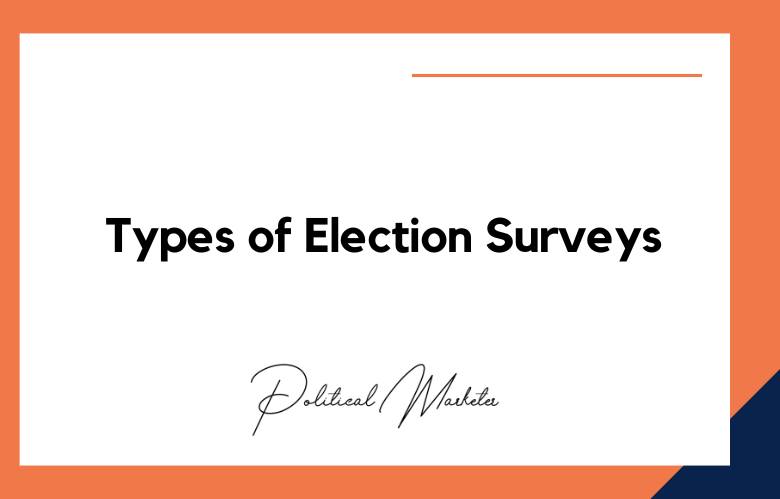Every vote counts in politics, and that’s why political campaigns have become more strategic than ever. Segmentation is a critical tool that has changed the face of political campaigns.
It allows political teams to focus their resources and attention on specific audiences that can influence an election. Whether national or local, political campaigns capitalize on segmentation to target voters and build campaigns suited for them.
What is Segmentation?
Segmentation is dividing a more significant population into smaller groups with similar characteristics. In marketing, this is used to understand the needs and preferences of different consumers.
In politics, the process is the same. Political parties use segmentation to understand their jurisdiction’s diverse communities and voters.
They do this by collecting data and analyzing it. This data might include demographic information (such as age, gender, race, and location), behavioral information (such as voting behavior and interaction with campaign messaging), and psychographic information (such as values, interests, and lifestyles).
Why is Segmentation Important?
Segmentation is essential because it enables campaigns to create targeted messages that resonate with specific audiences.
Campaigns that communicate in ways that resonate with voters personally have more tremendous success than those that do not.
Segmentation also helps campaigns to use their resources effectively, such as by identifying which areas have the highest proportion of likely voters. By focusing on these areas, movements can avoid wasting resources and save money.
How Segmentation Can Help Political Campaigns Build Target Audiences.
Political campaigns rely heavily on effective communication to persuade voters to support their candidates or political parties. One of the most critical aspects of any political campaign is the creation of a targeted and well-thought-out audience.
After all, a compelling message must be tailored to the intended audience’s needs, values, and interests to achieve the desired results. This is where the significance of segmentation comes into play. Explore how segmentation can help political campaigns build target audiences.
Segmentation divides a market or a population into smaller groups based on specific characteristics or attributes. Segmentation aims to identify groups of individuals that share common characteristics and are likely to respond to communication activities, products, or services in similar ways.
How to Segment and Build Target Audiences for Political Campaigns.
Political campaigns today are as much about creating a powerful and persuasive message as they are about targeting the right audience. Knowing your target audience is essential for effectively communicating your message and encouraging voters to support your candidate.
Segmentation and building target audiences can help political campaigns identify potential supporters, tailor their message, and drive engagement.
We discuss the benefits of segmenting your target audiences for political campaigns and explore some of the best practices for creating influential target audiences.
An In-Depth Guide to Segmentation and Building Target Audiences for Political Campaigns.
Political campaigns have evolved over the years, and today, a successful campaign involves using data and information to create a strategy that effectively reaches the target audience.
With segmentation, political campaigns can effectively organize, sort, and analyze voter data.
These data-driven insights are essential for political campaigns to build the right audience and create a message that resonates with them. We will take a comprehensive look at segmentation and how to build target audiences for political campaigns.
Demystifying Segmentation and Building Target Audiences for Political Campaigns.
In politics, winning an election is always the ultimate goal. However, achieving this requires a well-thought-out strategy that considers the campaign trail and factors in the target audience.
This is where segmentation occurs, breaking an audience into smaller, more manageable groups. By identifying groups with similar characteristics, political campaigns can build target audiences more receptive to their messages.
We’ll demystify segmentation and show you how to build target audiences for political campaigns that get results.
At the core of any successful political campaign is understanding the electorate. This means separating voters into smaller segments or groups with similar characteristics like demographics, voting history, or interests.
Segmentation allows campaigns to provide personalized messaging and reach people in a way that resonates with them.
Types of Segmentation and Building Target Audiences for Political Campaigns.
Understanding Segmentation:
Segmentation is dividing a population into segments based on various factors. These factors include demographics, psychographics, geography, behavior, and interests.
Segmentation helps campaigners build a clear picture of the groups they’re targeting and establish the messages they should convey to these groups.
For instance, a political team may segment voters based on age demographics and use data such as voting rates and candidates’ opinions to build campaigns targeting the group.
Building Target Audiences:
Once a campaign team understands its target audiences, they have to devise ways to deliver the right message to target audiences.
The campaign team would use different media channels, like social media, email, targeted ads, and other methods to communicate with their specific targets.
Authentic and non-generic messages delivered through these channels can improve engagement and persuade them to vote, whereas a generalized statement to everyone will not be compelling.
Impact of Segmentation in Politics:
Political segmentation enables campaigners to focus their attention on influential voters. For example, in a swing state, segmentation helps the campaign team know voters with the highest propensity to support their candidate.
This will help the team invest time and resources on them to change the outcome of the election. It makes the campaign more efficient and focused on carrying out tailored action plans.
Challenges with Segmentation:
Political segmentation relies heavily on data collection and strategic insight to be effective.
Campaign teams must ensure the data is accurate, relevant, and reliable. They should be prepared to go beyond demographics and collect granular information about the target audience.
These factors can be challenging to acquire, and sometimes they’re biased. Avoiding assumptions without adequate evidence is essential, as they could backfire.
Conclusion:
Political campaigns have become data-driven, and segmentation is essential to effectively reach and connect with target audiences.
Segmentation helps campaigners understand their target audience’s needs, behaviors, and opinions, which enables them to create tailored and personalized messaging that resonates with them.
However, segmentation can be challenging, and collecting relevant and accurate insights is vital. Segmentation is an essential component of modern-day political campaigning, and it’s time for political teams to realize its value and use it to win elections.
Call: +91 9848321284
Email: [email protected]
Frequently Asked Questions (FAQs)
What is audience segmentation in political campaigns?
Audience segmentation is the process of dividing the voter base into smaller groups based on shared characteristics to deliver tailored campaign messages.
Why is segmentation important in politics?
It improves communication effectiveness, boosts engagement, and helps campaigns focus resources on persuadable and high-priority voter groups.
What are the main types of audience segments in political campaigns?
Demographic, geographic, psychographic, behavioral, and issue-based segments are most commonly used.
How do demographics influence political targeting?
Age, gender, income, education, and religion can significantly affect voting behavior and issue prioritization.
What is psychographic segmentation in politics?
It focuses on values, beliefs, lifestyles, and personality traits to tailor emotionally resonant messages.
How is behavioral data used in campaign targeting?
It includes past voting behavior, online interactions, donation history, and event participation to predict future support.
What tools help with voter segmentation?
CRM systems, voter databases, social media analytics, GIS mapping, and AI tools enable precise segmentation.
How does issue-based segmentation work?
Voters are grouped based on their stance on key issues like economy, healthcare, environment, or education.
Why is geographic targeting crucial in elections?
Because political messaging and turnout strategies often vary by region, constituency, or urban vs. rural settings.
Can audience segmentation help reduce campaign costs?
Yes. By focusing on high-impact groups, campaigns avoid wasteful spending on low-engagement or unreachable voters.
What role does data analytics play in political segmentation?
It helps identify patterns, track voter behavior, and optimize message delivery across platforms and channels.
How do campaigns gather voter data ethically?
By using publicly available records, consent-based surveys, and complying with data privacy regulations.
What is a persona in political targeting?
A fictional profile representing a key voter segment, used to guide messaging, visuals, and media planning.
How do digital platforms support audience building?
Platforms like Facebook, Google Ads, and YouTube allow custom audience creation based on interests, behaviors, and demographics.
What’s the difference between core, custom, and lookalike audiences?
Core = predefined segments, Custom = based on first-party data, Lookalike = new people similar to existing supporters.
Can segmentation be used in grassroots campaigning?
Absolutely. It helps volunteers prioritize door-to-door outreach, phone banking, and event invitations.
How often should campaign segments be updated?
Continuously—especially in dynamic elections, as public sentiment and voter priorities evolve rapidly.
What are the risks of poor segmentation?
Generic messaging, alienated groups, low engagement, and missed opportunities for persuasion or turnout.
How does segmentation affect messaging strategy?
It ensures that language, tone, visuals, and content formats align with the specific needs and preferences of each audience.
What is the future of political audience segmentation?
It’s becoming more AI-driven, predictive, hyper-personalized, and integrated across all digital and offline campaign touchpoints.










